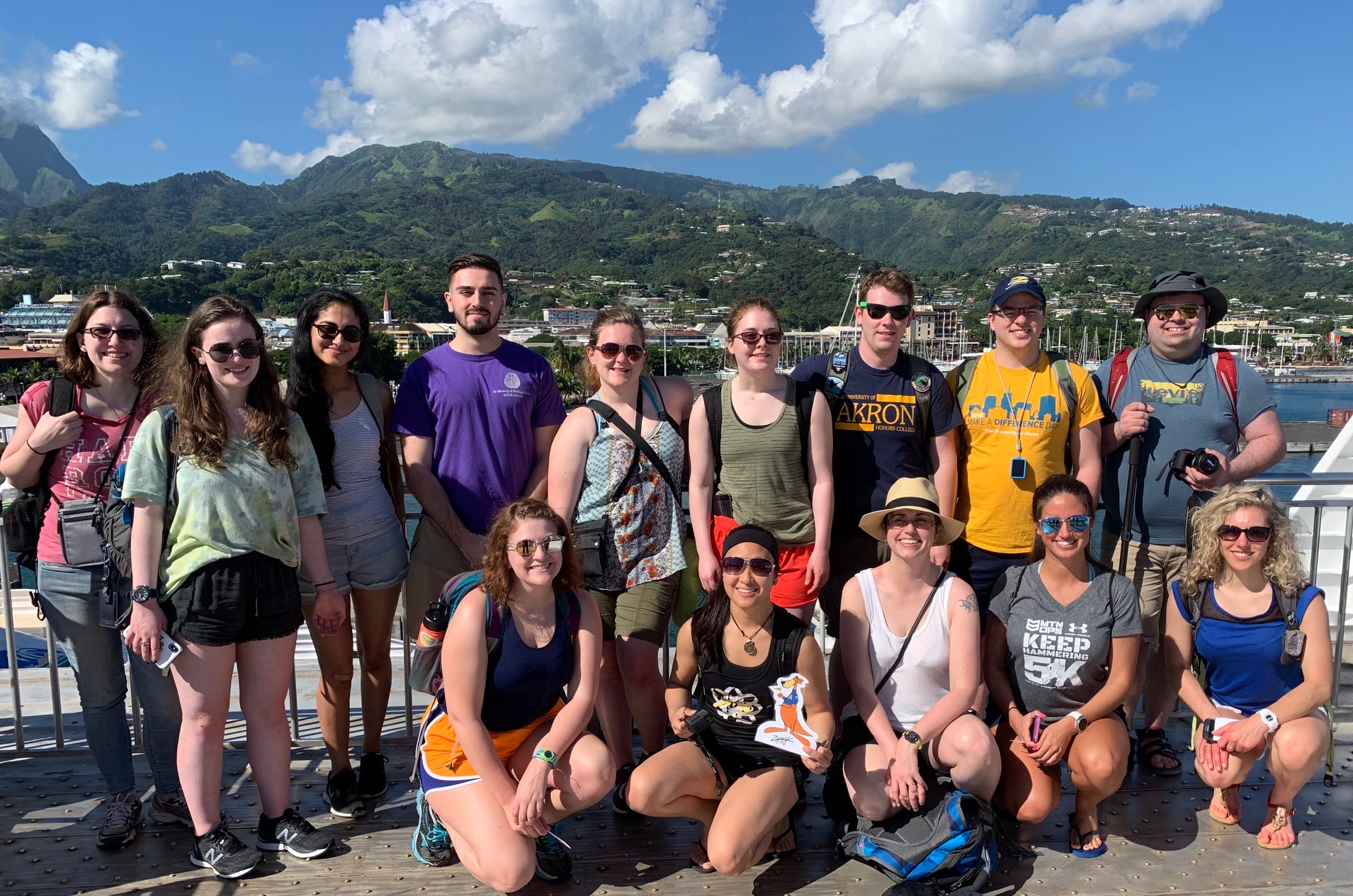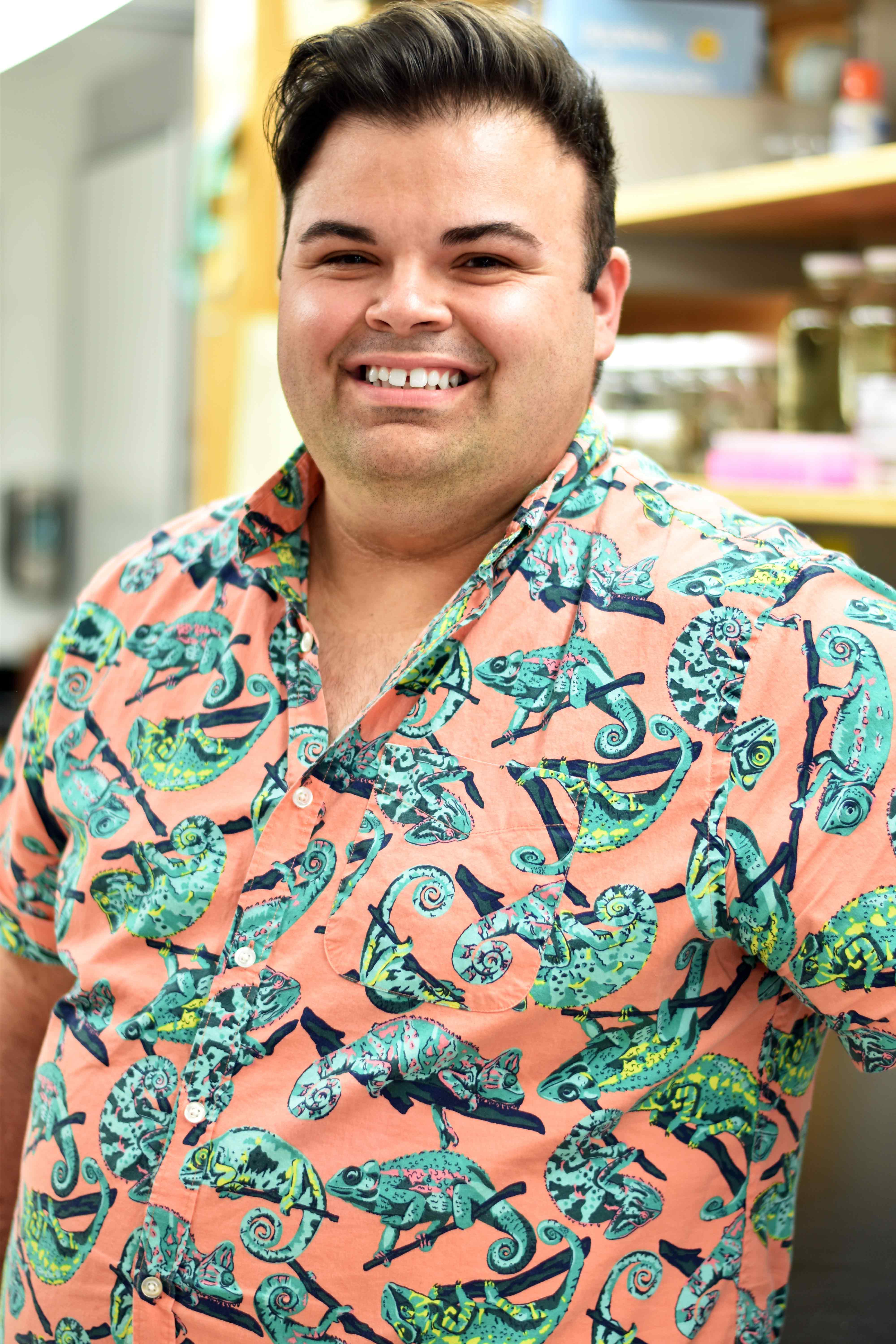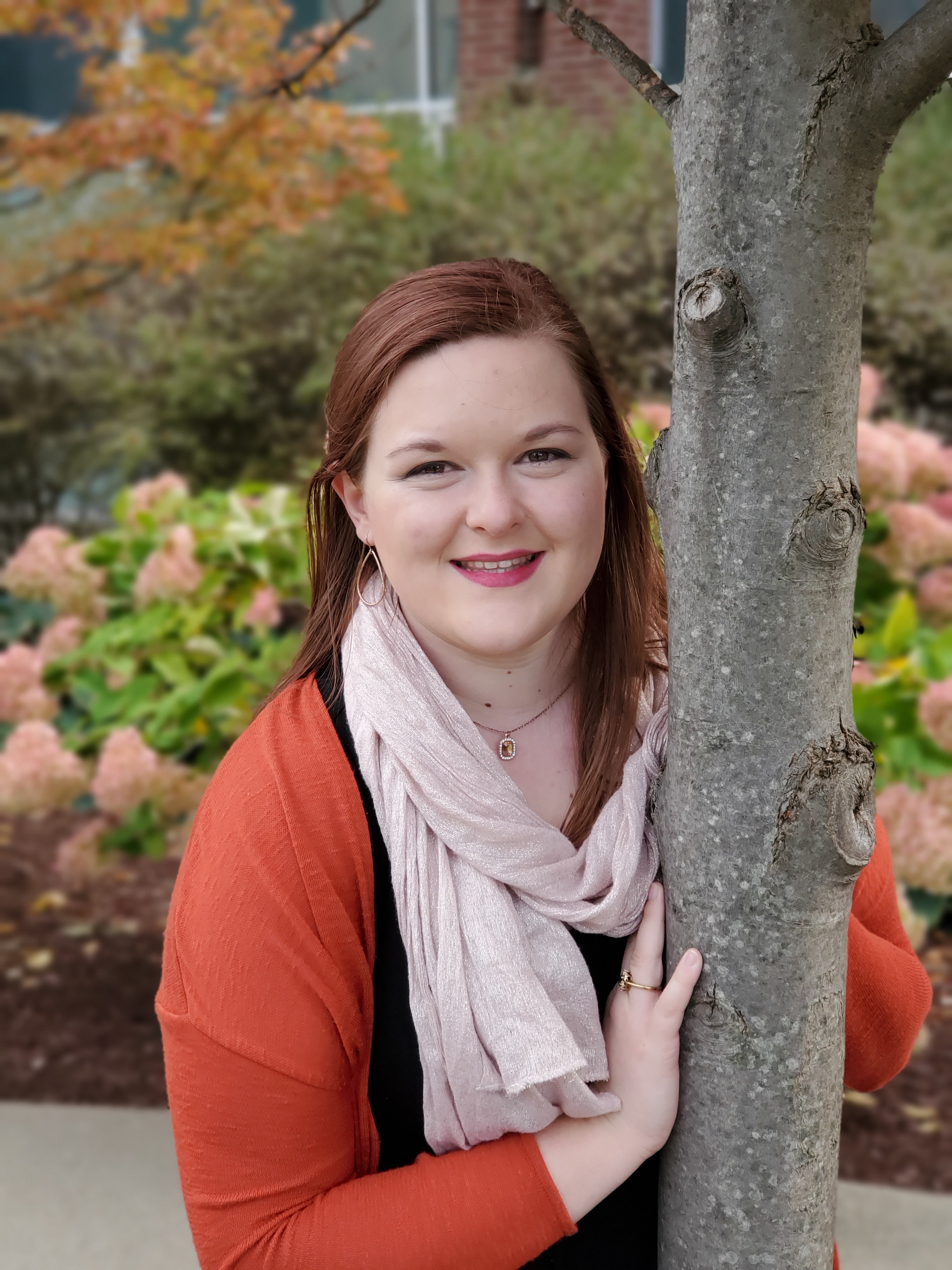Biology research abroad leads to three published papers and one memorable experience
As part of The University of Akron’s sesquicentennial celebration — honoring 150 years of our people, place and promises — we are hosting a “Celebration of Academic Excellence” to highlight the history and future of our colleges and academic disciplines.
Today we’re looking at the history and achievements of UA’s oldest college, the Buchtel College of Arts and Sciences.

Research doesn’t always take place in an indoor lab. Sometimes it also occurs in beautiful, exotic locations where it is work and play. In 2019, The University of Akron’s Department of Biology took a team of 11 undergraduate students and three graduate students to Tahiti to work on three research projects. The study abroad opportunity was part of a short-term Tropical Vertebrate Zoology course led by Dr. Richard Londraville and Dr. Peter Niewiarowski, both professors of Biology. The exceptional work was led by Integrated Bioscience Ph.D. candidates Carrie Buo and Austin Garner under the direction of Londraville and Niewiarowski.
One year later, all three research projects have been published in industry journals including the Journal of Fish Biology, Marine Freshwater Behavior and Physiology and Frontiers in Zoology. Their paper on the response of anemone fish to laser pointers in Fish Biology even attracted the interest of a salt-water aquarium YouTube channel.
“Undergraduate research is not always a guarantee for students and having research published is even more of a rarity,” explained Londraville. “The skill, passion and dedication of these UA teams made this trip a success story beyond measure.”

One of the projects, composed of the trip’s “gecko team,” was led by Garner, who also completed his undergraduate studies at UA. The work focused on the native gecko’s superior locomotor performance in complex, three-dimensional habitats compared to the invasive species of gecko in that area, known colloquially as the common house gecko.
“In simple, two-dimensional environments, like building walls, the invasive species of gecko outperforms and outcompetes the native gecko species, driving them into more complex, three-dimensional habitats, like forests. We found that the native gecko is more adept at moving on structurally complex surfaces than the invasive gecko, potentially explaining the differences in habitat between the two species,” explains Garner.
Garner and his team’s research can be used to inform future research and studies that aim to curtail the prevalence of invasive species, which is just one more reason he and his team can be proud of the work they did in Tahiti.
Student perspectives
“I was afforded similar research opportunities during my undergraduate degree in the UA Department of Biology,” says Garner, “and without those experiences, I likely would not have chosen research and teaching as a career. I know firsthand that practical research experiences not only provide students with the opportunity to directly apply what they learn in lectures, but also positively influence their career goals and overall university experience.”
The undergraduate students on his team could not agree more. Among them are Alexandra Pamfilie, Rachael Kindig and Joshua Taylor:

Alexandra “Alex” Pamfilie, the co-lead author on the published article, has since graduated from UA with degrees in Biology and Psychology. The Cuyahoga Falls native is currently enrolled in her first year as a Ph.D. student at Stony Brook University.
“The experience I had on the trip convinced me to pursue research as a career option,” says Pamfilie. “I’m looking forward to putting our publication on my application for the National Science Foundation Graduate Research Fellowship Program.”

Joshua Taylor is a senior Biology major at UA and he was “brimming with confidence and excitement” when he found out his work with Garner was published. Originally from Medina, Ohio, Taylor was happy to spend time away from home in Tahiti.
“We got to go on night hikes to survey the area and the number of geckos. It was so peaceful, and the sky was clear. Being able to be there on nights like that and getting to know our fellow classmates on long hikes was my favorite part of my trip,” says Taylor.

Rachael Kindig was a freshman when she participated in the research project and initially felt a little in over her head.
“If someone was looking to go on a research trip, I would tell them to absolutely do it. I went in not knowing as much as everyone else but if you are willing to be taught and ask questions, professors and other students are more than willing to help,” says Kindig, a Doylestown, OH, native.
Now a junior in UA’s School of Education specializing in Integrated Science for grades 7-12, Kindig says her research in Tahiti will make her a better high school teacher, able to share her first-hand experience.
Related:
- Check out this video about their trip
Media contact: Lisa Craig, 330-972-7429 or lmc91@uakron.edu.
Story by: Madeline Myers
